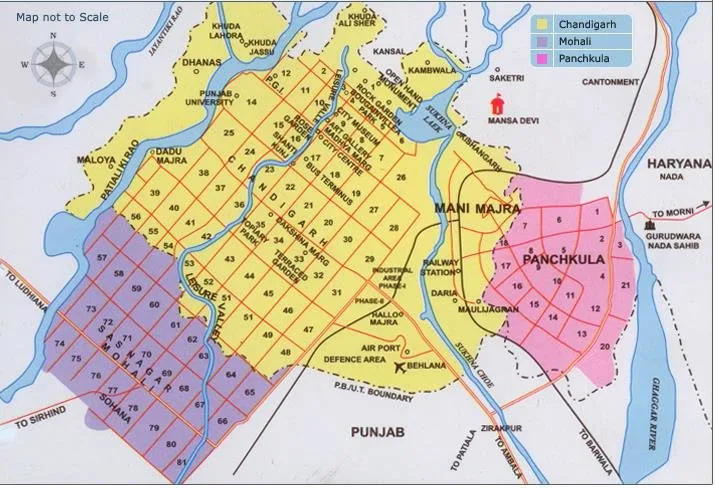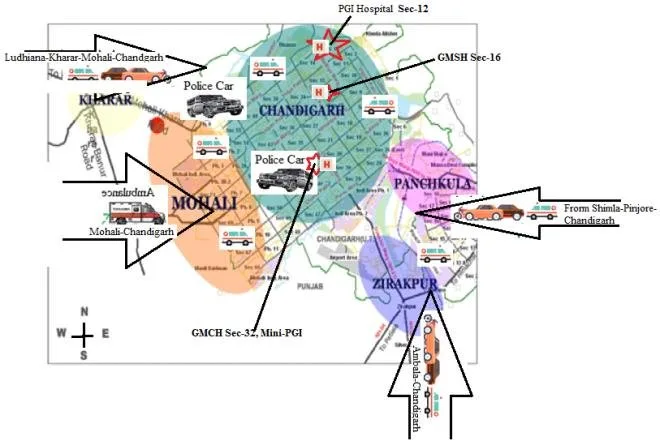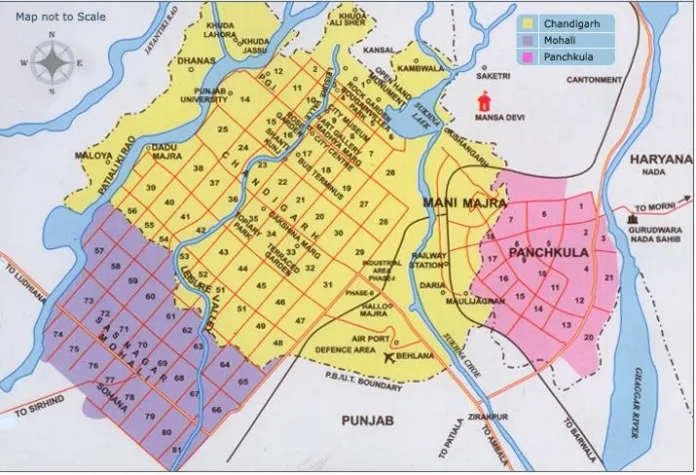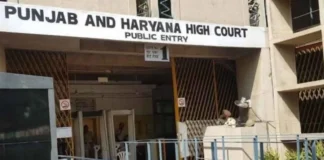Over the last two decades, Chandigarh’s neighboring towns—Mohali in Punjab and Panchkula in Haryana have grown from quiet satellite settlements into full-fledged urban centers. Together, they now form what is widely referred to as the Tricity region. This expansion has been driven by rising population pressure, housing demand, economic diversification, and improved connectivity.
While this integrated urban cluster has become one of North India’s most dynamic regions, the pace of growth has created visible strain on Chandigarh’s infrastructure. Roads, public transport, water supply, and utility systems are struggling to keep up with daily inter-city movement and urban sprawl.
This article analyses how the expansion of Mohali and Panchkula is affecting Chandigarh’s infrastructure, what key challenges exist, and what long-term strategies could ensure balanced, sustainable development across the Tricity.
1. The Rise of Satellite Towns Around Chandigarh
Planned Core, Unplanned Periphery

Chandigarh was conceived by Le Corbusier as a low-density, meticulously planned capital city with restricted population and limited vertical growth. However, as land within Chandigarh became saturated, new residential and commercial developments spilled over into its periphery—initially in Mohali (S.A.S. Nagar) and later in Panchkula.
The two towns, originally designed as administrative and residential extensions, have evolved into independent urban economies. Mohali’s IT City and Aerocity projects, Panchkula’s industrial and institutional zones, and Zirakpur’s housing boom have transformed the urban landscape into a continuous metropolitan belt.
Growth Indicators
Mohali’s area expansion: Over 140 sq km under its 2031 Master Plan, with around 60 sectors under active development.
Panchkula’s population increase: Nearly tripled since the early 2000s, with continuous construction of residential societies and commercial complexes.
Housing surge: Peripheral locations such as Zirakpur, Kharar, Baltana, and New Chandigarh record double-digit annual growth in residential permits.
The result is a seamless but uncoordinated urban continuum where Chandigarh’s design discipline contrasts sharply with the more organic, market-driven expansion of its neighbors.
2. Drivers Behind the Expansion
a. Population Pressure and Housing Demand
Limited availability of land and rising property prices inside Chandigarh have pushed middle-income families and new residents toward nearby towns. Affordable apartment projects and gated communities in Mohali and Zirakpur offer modern facilities at almost half the price of comparable sectors in Chandigarh.
b. Employment and Economic Opportunities
The establishment of the IT City in Mohali, proximity to Chandigarh’s technology park, and the presence of educational and healthcare institutions have drawn professionals and students to the outskirts. Panchkula has developed strong administrative and industrial bases that complement this trend.
c. Connectivity and Infrastructure Investment
Enhanced connectivity through the Chandigarh International Airport, the Zirakpur flyovers, and the Kharar bypass has improved mobility across the region. Upcoming projects like the Tricity Metro are expected to further integrate daily commuting patterns.
3. Infrastructure Under Pressure
a. Roads and Vehicular Congestion

Chandigarh’s road network was designed for a city of around 5 lakh people. Today, daily vehicular entries from Mohali and Panchkula exceed 2 lakh. Key junctions—such as the Housing Board Chowk, Tribune Chowk, and Zirakpur intersection—face chronic congestion.
New road projects, including GMADA’s 200-ft wide corridor connecting the New Chandigarh boundary and the ₹1,878-crore Zirakpur bypass, aim to address these bottlenecks. Yet, without regional traffic management, piecemeal expansions cannot offset the growing load.
b. Public Transport Deficiencies
The Chandigarh Transport Undertaking (CTU) operates buses across Tricity, but coverage and frequency remain inadequate. Many commuters rely on private vehicles or ride-sharing, worsening congestion and emissions. The Tricity Metro Project, estimated at ₹24,000 crore and spanning 85 km, promises a sustainable shift but is still at the approval stage.
Meanwhile, the integration of e-buses and park-and-ride systems remains slow due to funding and jurisdictional hurdles between Chandigarh, Punjab, and Haryana.
c. Utilities and Urban Services
The Kajauli Waterworks, the region’s primary source of potable water, now struggles to meet demand. Power consumption has risen sharply with urban densification, while sewage and storm-water systems in newly urbanized areas are under-capacity. The lack of a unified waste-management mechanism across three administrative boundaries complicates the issue further.
Monsoon floods in 2023 and 2024 highlighted these weaknesses, as overflowing drains and blocked causeways disrupted mobility between Chandigarh and Panchkula.
4. Urban Impacts and Emerging Risks
a. Declining Urban Efficiency
Commuting time across Tricity has increased by 30 to 40 percent in the last decade. Office workers and students travelling between the three cities lose several productive hours each week, indicating a mismatch between housing and job locations.b. Environmental Stress
Vehicular emissions, noise, and dust pollution have eroded Chandigarh’s once-famous air quality. Post-festive data in recent years show the city frequently slipping from the “Good” to “Moderate” or even “Poor” AQI category. Loss of green buffers due to real-estate projects further aggravates the environmental burden.
c. Urban Sprawl and Governance Fragmentation
Rapid peripheral growth without integrated master-planning has created an unbalanced pattern of land use. Disjointed governance—Chandigarh being a Union Territory, Mohali under Punjab, and Panchkula under Haryana—results in inconsistent policies, duplicated costs, and slow infrastructure coordination.
5. Economic and Social Dimensions
The economic story of Tricity is both promising and cautionary. Real-estate growth and commercial development have raised regional GDP and employment, but infrastructure lag threatens sustainability.
Businesses face higher logistics and energy costs, while residents report declining service reliability. Socially, migration has diversified the demographic profile, but unequal distribution of amenities—such as healthcare, parks, and public schools—has widened the urban quality gap between Chandigarh’s core sectors and its periphery.
6. Policy and Planning Recommendations
a. Unified Regional Planning Authority
Experts have long advocated a Tricity Development Authority, similar to the National Capital Region (NCR) Board in Delhi. Such an institution could coordinate land use, infrastructure, and environmental standards across jurisdictions, reducing duplication and planning conflicts.
b. Transit-Oriented Development
Development should concentrate around high-capacity public transport corridors, such as the proposed metro and bus-rapid-transit routes. Compact, mixed-use zones would reduce dependence on private vehicles and improve energy efficiency.
c. Sustainable Infrastructure Investment
Infrastructure upgrades should precede, not follow, new real-estate approvals. Investments in storm-water drainage, underground utilities, and renewable-energy grids can ensure long-term resilience. Authorities must adopt data-driven monitoring to predict shortages before they escalate into crises.
d. Environmental Safeguards
Preserving natural buffers like the Sukhna Choe, Patiala Ki Rao, and forest reserves is vital. Strict enforcement of eco-zoning norms and green-building standards can balance growth with environmental protection.
e. Citizen Participation and Transparency
Public consultations, open data on urban projects, and citizen-feedback platforms can improve governance accountability. Residents should be encouraged to engage in mobility planning, waste segregation, and water-conservation initiatives.
7. The Road Ahead
The transformation of Mohali and Panchkula from satellite towns to independent urban centers reflects the broader urbanization trend in India. Chandigarh’s challenge lies not in halting this growth but in guiding it through coordination, sustainability, and foresight.
A unified, regional approach that integrates land use, mobility, and resource management can prevent the Tricity from becoming a fragmented sprawl. If executed well, this integration could make Chandigarh, Mohali, and Panchkula a model of planned metropolitan development where infrastructure, environment, and economy progress in harmony.





